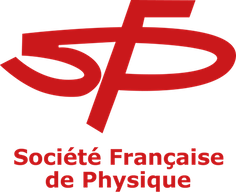Orateur
Description
P. Delahaye$^{1} $, E. Liénard$^{2}$ , I. Moore$^{3}$ , G. Ban$^{2}$ , M.L. Bissell$^{4}$ , S. Daumas-Tschopp$^{2}$, R.P. De Groote$^{3}$ ,
F. De Oliveira$^{1}$ , A. De Roubin$^{5}$ , T. Eronen$^{3}$ , A. Falkowski$^{6}$ , C. Fougères$^{1}$, X. Fléchard$^{2}$ , S. Geldhof$^{7}$ ,
W. Gins$^{3}$ , N. Goyal$^{1}$ , M. Gonzalez – Alonso$^{8}$ , A. Jaries$^{3}$ , A. Jokinen$^{3}$, A. Kankainen$^{3}$ , M. Kowalska$^{9}$, A. Koszorus$^{3}$ , N. Lecesne$^{1}$ , R. Leroy$^{1}$ , Y. Merrer$^{2}$ , G. Neyens$^{7,9}$ , G. Quéméner$^{2}$ , M. Reponen$^{3}$, S.Rinta-Antila$^{3}$ , A. Rodriguez–Sanchez$^{6}$ , N. Severijns$^{7}$ , A. Singh$^{1}$ , J. C. Thomas$^{1}$, V. Virtanen$^{3}$
${}^1 \! $GANIL, Bd H. Becquerel, 14000 Caen, France
${}^2 \! $ Normandie Univ, ENSICAEN, UNICAEN, CNRS/IN2P3, LPC Caen, 14000 Caen, France
${}^3 \! $ Department of Physics, University of Jyväskylä, Survontie 9, 40014 Jyväskylä, Finland
${}^4 \! $ School of Physics and Astronomy, University of Manchester, Manchester, UK
${}^5 \! $ CENBG, 19 chemin du Solarium, 33175 Gradignan, France
${}^6 \! $ IJCLab, 15 Rue Georges Clemenceau, 91400 Orsay, France
${}^7 \! $ Instituut voor Kern- en Stralingsfysica, KU Leuven, B-3001 Leuven, Belgium
${}^8 \! $ IFIC - University of Valencia, 46980 Paterna, Spain
${}^9 \! $ CERN, Esplanade des Particules, CH-1211 Geneva, Switzerland
Why are we living in a world of matter? What is the reason for the strong matter – antimatter asymmetry we observe in the Universe?
A large CP violation has therefore to be discovered to account for this large matter-antimatter asymmetry, at a level beyond the CP violation predicted to occur in the Standard Model via the quark-mixing mechanism.
The MORA (Matter’s Origin from RadioActivity of trapped and oriented ions) project aims to search for new CP violations in beta decay thanks to the measurement of the triple D correlation, with an unprecendented precision to the order of 10 −5 [1]. The MORA experiment uses an elegant polarisation technique, which implements the high efficiency of ion trapping[2] and the orientation of a laser. A ring
of detectors allows the measurement of the coincidences of the beta particles with the recoil ions coming from the trapped radioactive ions. The D parameter can be determined by the asymmetry in the counting rate when inverting the polarisation. This measurement should potentially enable, for the first time, a
probe of the Final State Interaction effect which mimics a non-zero D correlation at or below 10 −4 .
The MORA apparatus is currently tested either at the LPC Caen and at GANIL before moving to JYFL, where adequate lasers are available for the polarization of 23 Mg + ions. MORA will be installed later in the DESIR hall at GANIL where better production rates are expected, offering the opportunities to reach unprecedented sensitivities to New Physics.
References
[1] P. Delahaye et al., Hyperfine Interact 240, 63 (2019).
[2] M. Benali et al., Eur. Phys. J. A 56, 163 (2020).
This presentation aims to showcase the current status of the MORA experiment (commissionning, test on detectors ...) and the perspectives beyond it (moving to JYFL, first measurements ...).

